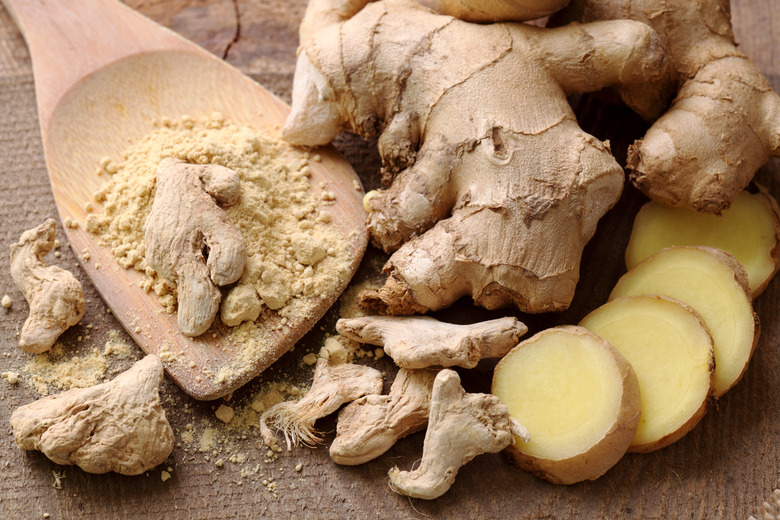What Are The Good Benefits Of Ginger?
While it may seem like ginger is a recent trend in holistic and alternative treatments, the plant, which originated in Southeast Asia, has been used for medicinal purposes in countries like India and China for centuries. In fact, many Asian households used it to help treat anything from a headache to a sore throat to menstrual cramps long before studies and scientific evidence proved ginger's health benefits.
Healthy Brain Foods You Should Be Eating
According to a study discussing the effectiveness of ginger in the journal Integrative Medicine Insights, the anti-nausea properties of ginger come from gingerols, which are natural anti-inflammatory and antioxidant compounds found in raw ginger that activate spice receptors on the tongue.
If you've ever had ginger ale or ginger tea to settle an upset stomach, you already know that ginger can help with nausea and digestive problems. But to get the largest amount of health benefits from ginger, you should be consuming it raw.
Along with its anti-nausea properties, ginger also stimulates gastric emptying, moving things out of the stomach more quickly and thus providing relief to tummy troubles.
Beyond its use for nausea, ginger is also packed with nutrients that benefit both the body and brain — and while these healing properties are present in many of its forms, you might consider having a few fresh ginger roots on hand.
In 2013, researchers studied the antiviral effects of both fresh and dried ginger on a respiratory virus in human cells. The study indicated that fresh ginger was an effective tool in protecting the respiratory system, while the dried ginger was not.
Raw ginger is a low-cost and easy-to-find natural remedy that you can use to help treat several everyday issues like sore throats and headaches. If you're unsure how to consume raw ginger, there are a few different ways.
The first is to mince raw ginger and blend it up in a healthy fruit smoothie. To lessen the zing, use fruits that have a lot of sweet flavor like fresh mangos. In this recipe for a mango smoothie with turmeric green tea and ginger, matcha powder adds a soft earthiness that tones down the sharp ginger.
Another option is to add a chunk of ginger to a hot cup of tea or hot water. You don't even have to peel it — simply place a piece of ginger in your teacup and pour boiling water over it. Add some honey and a squirt of fresh lemon if you like, and you've got the perfect remedy for fall sniffles.
You can also grate some ginger into your favorite comforting or spicy soup. When you grate ginger as opposed to dropping it in raw, the result is milder and much more dispersed. It's a staple in Indian cooking and brings both heat and a slightly spicy, slightly sweet flavor.
If you're more of an amateur baker, you can also add chopped pieces of ginger to muffins or cake batter or try pumpkin desserts with fresh ginger for a zesty fall twist.
But if you don't want to whip up a recipe, you can eat it raw just as is — you only need a tiny sliver to chew on. Cut an inch off the ginger root, use a spoon to peel the brown skin off and nibble on it. You can also use a vegetable peeler to shred super thin slices of ginger and let them sit on your tongue before chewing them down for a less pungent experience.
If you're not familiar with storing raw ginger, it can last in the fridge for three to four weeks and even longer in the freezer. Simply place the root in the vegetable drawer or in an eco-friendly produce bag to keep it fresh, and when you're ready to use it, you can use a grater or zester to grate the frozen piece of ginger right in without needing to thaw it.
